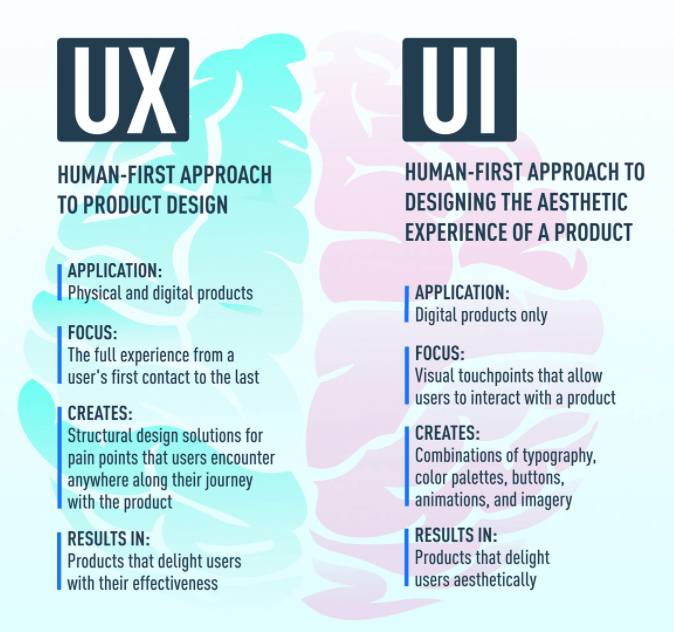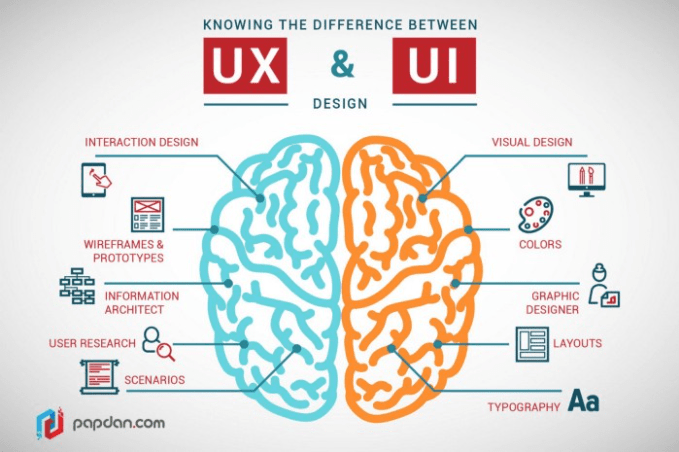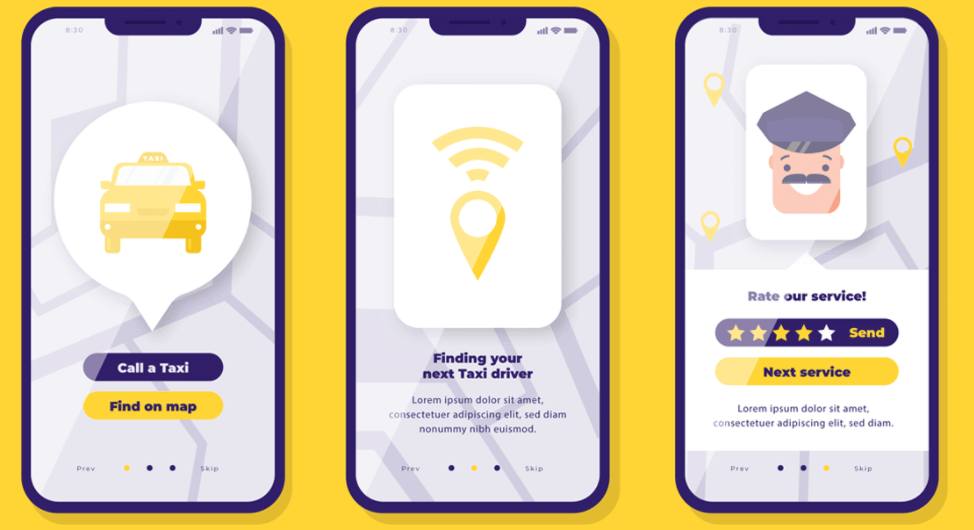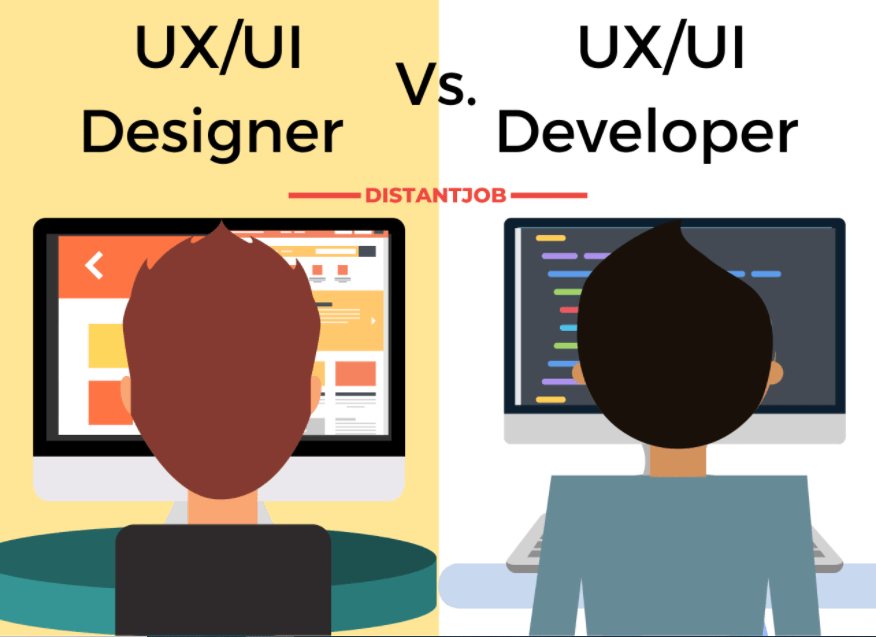At the most basic level, a user interface (UI) is an array of screens, pages, and visual elements – such as buttons and icons – that allow an individual to interact with a product or service.
User experience (UX), on the other hand, is the internal experience an individual has when interacting with every aspect of a company’s products and services.
It is common for people to exchange or sometimes misplace these words. Have you ever wondered, “What is UI, what is UX, and what is the difference between them?” In today’s post, we will go a little deeper to better understand the differences between UI and UX.
Table of Contents
UI v/s UX: Points of Difference
UX (User Experience) and UI (User Interface) are two interrelated terms. While the UI is generally related to the interaction between users and computer systems, software, and applications, UX is generally related to the user’s overall experience with the brand, product, or service.

In order to understand the difference more clearly we have to understand both the terms separately. So, let’s get through it.
What is a UI?
Simply put, a user interface (UI) is anything that the user can interact with to use a digital product or service. It has everything from a screen and touchscreen to keyboard, sound, and lights. To understand the evolution of UI, however, to learn a little more about its history and how it has evolved into the best practices and profession.

A Brief History of the User Interface
In the 1970s, if you wanted to use a computer, you had to use a command-line interface. The graphical interfaces used today are not yet commercially available. In order for a computer to work, users must communicate through a programming language that requires endless lines of code to complete a simple task.
The first graphical user interface (GUI) was developed by computer scientists at Xerox PARC in the 1980s. With this unprecedented innovation, users can now interact with their personal computers by submitting commands via icons, buttons, menus, and checkboxes.
This change in technology meant that anyone could use a computer without the need for coding and started the personal computer revolution.
In 1984 Apple Computer released the Macintosh personal computer, which included point-and-mouse clicks. The Macintosh was the first commercially successful home computer to use this type of interface.
The proximity and breadth of personal and office computers mean that interfaces must be designed with users in mind. If consumers are not able to interact with their computers, they will not sell. As a result, the UI designer was born.
As with any evolving technology, the role of the UI designer has also evolved to be more and more in demand from systems, preferences, predictions, and accessibility devices. Now UI designers are working not only on computer interfaces but also on mobile phone augmented and virtual reality and “invisible” or screenless interfaces (also known as zero UI) such as voice, gesture, and lighting. Web design and development learn more.
Today’s UI designers have almost unlimited opportunities to work on websites, mobile apps, wearable technology, and smart home devices. As long as computers are a part of everyday life, users of all ages, backgrounds and technical experience will need to create interfaces that can be used effectively.
What is UX?
Improvements to the UI have resulted in improved user experience or UX. If consumers have something to interact with, their experience, whether it is positive, negative, or neutral, has changed the experience of consumers about those interactions.

Cognitive scientist Dan Norman was credited with coining the term “user experience” when he worked at Apple in the early 1990s and defined it as follows:
‘User Experience’ covers all aspects of end-customer interaction with the company, its services, and its products.
It is a broad definition that includes every possible interaction an individual has with a product or service – not just the digital experience. Some UX experts chose to call the field customer experience and others went a step further by referring to the field as experience design.
Whatever it is called, Norman’s basic definition of UX is central to the design of every thought experience — it is ubiquitous and always centered around the human being interacting with it.
To better understand the experience, Peter Morville developed stunning visualization to shed light on what goes into effective UX design.
How are UX and UI are different?
While UX and UI are intertwined, there are some major differences. First, the UI deals specifically with digital devices and the capabilities of people who can use them. User experience is a term that refers more broadly to interaction with a brand, product, or service. Although it is often used in the context of devices, the user experience should not be about digital products.

Another difference between UI and UX: UX is more about how a product makes you feel, but the UI is more about how it looks. For example, a website may look great, but it’s very difficult to use (great UI but terrible UX), or vice versa. In this way, UX and UI join hands.
However, UI vs UX designers can use different skill sets and work at different stages in the process.
UX is the first because user experience designers start by doing extensive research to understand their goals and pain points. They usually map the entire user journey and observe ways to improve it. Sometimes, they create wireframes for their research. Then, the UI designer brings the UX recommendations to life. Based on user travel and wireframe, for example, they apply changes to the website. Learn about wireframes.
At this stage, the UI designer takes the UX designer’s ideas into consideration while developing the design to suit the needs of the customers. There may also be a feedback loop between the user experience and the user interface; Once the UI designer has created it, UX designers can test the interface.

How do UX design and UI design work together?
We explored the differences between UX and UI, And now let’s see how the two work together. You may be wondering if one is important to the other, but the fact is that they are both important! Let me quote designer and expert Helga Moreno, as she made very clear in her article The Gap Between UX and UI Design:
“What looks great but is hard to use is an example of a great UI and bad UX. What’s very useful is an example of a great UX and a bad UI.”
As you can see, UX and UI are strongly integrated and despite having millions of examples of great products rather than one another, imagine how successful the two regions would be if they were strong.
The UI design is like icing on a UX cake. Imagine you came up with an amazing idea for the app; Invisible from the market and can really change people’s lives for the better. You hire a UX designer to do user research and help you figure out what features your app really has and how the entire user journey is mapped out.
Your app delivers what your target audience wants and needs; however when they download it, they find that the text on each screen is simply not visible (think of the yellow text on a white background). What’s more, the buttons are very close; They keep pressing the wrong button by mistake! This is a classic case of bad UI destroying good UX.
On the other hand, have you ever seen a website that is really painful to use, beyond the mind-blowing animations and on-point color schemes? A good UI will never replace a bad UX; If you bite into a beautifully decorated cake it’s like picking up a really amazing flavor.
Therefore, the UX and UI are perfectly compatible with each other when it comes to product design- and in today’s competitive market, it is essential to get both elements right. Whether you choose to work as a UX designer or a UI designer, it is useful to have an understanding of both; In the end, you will inevitably work together. This brings us to our next part
What does a UX designer do?

So now we know briefly, what is the role of a UX designer — but how does it translate into everyday tasks? Here is an example of the general functions and responsibilities of a UX designer. You will find a more detailed description of the UX design process in this guide.
- Strategy and Content:
- Competitor analysis
- Customer analysis and customer research
- Product structure and strategy
- Content development
- Wireframing and prototyping:
- Wireframing
- Sample
- Test and repeat
- Development plan
What does a UI designer do?
If you like the idea of creating amazing user experiences and see yourself as a more visual person, you may be more interested in UI design. Below you will find a brief snapshot of the UI Designer’s key functions or a more comprehensive description of what the UI Designer actually does.

- Product look and feel:
- Customer analysis
- Design research
- Branding and graphic development
- User guide and story
- Accountability and interaction:
- UI prototype
- Interactivity and animations
- Optimization for all device screen sizes
- Run with the developer
As a visual and interactive designer, the role of the UI is crucial to any digital interface and for customers, depending on the brand. The brand is never the sole responsibility of the UI designer, its translation to the product. Explore best themes for WordPress.
You will also notice the last point that indicates the “implementation” responsibility of the design with the developer. Although UI jobs have generally worked this way in the past, you should be aware that lines are blurred due to the use of the term “web designer” (specially coded UI designer) to refer to user interface designers. Being skillfully replaced. Although UX does not require coding, the UI depends on it over time as part of building interactive interfaces.
That’s all about the difference between UI and UX design. Hope You find it interesting. If so, don’t forget to share and leave comments. Thank You.






7 Comments
gato bombay adopción
Marcado como favorito, gran colección! ¡El amor bootstrap y los temas gratuitos siempre son agradables!
inamdurrani60
Thanks Gato bombay
Vida Disher
Did you know? With AI, you can write ebooks in minutes.
Latia Senf
When I initially left a comment I seem to have clicked on the -Notify me when new comments are added- checkbox and now every time a comment is added I recieve four emails with the same comment. Perhaps there is a way you can remove me from that service? Cheers!